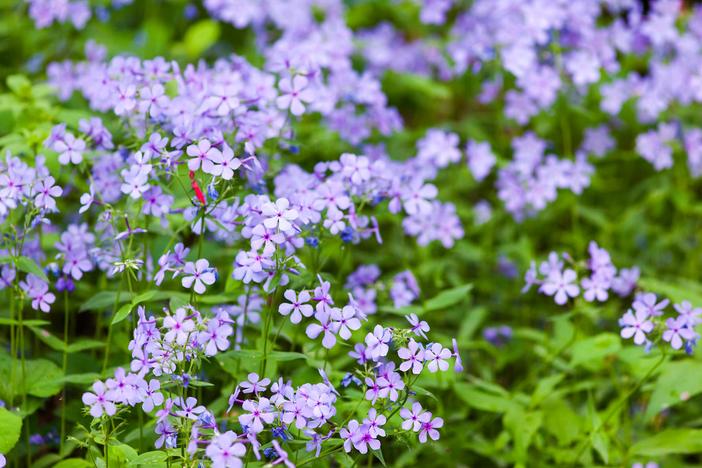Lapham’s Phlox
(Phlox divaricata subsp. laphamii)
Lapham’s Phlox (Phlox divaricata subsp. laphamii)
/
/

Melissa McMasters
CC BY 2.0
Image By:
Melissa McMasters
Recorded By:
Copyright:
CC BY 2.0
Copyright Notice:
Photo by: Melissa McMasters | License Type: CC BY 2.0 | License URL: https://creativecommons.org/licenses/by/2.0/ | Uploader: cricketsblog | Publisher: Flickr

















Estimated Native Range
Summary
Phlox divaricata subsp. laphamii, commonly known as Lapham’s Phlox, Wild Blue Phlox, or Sweet William Phlox, is a perennial herb native to rich deciduous woodlands and along stream banks in Eastern and Central North America. It has a moderate growth rate, reaching heights of 0.5-1.5 feet (0.15-0.5 meters) and spreading 1-2 feet (0.3-0.6 meters). This phlox species is characterized by its clump-forming habit and lance-shaped leaves. From mid-spring to early summer, it produces clusters of fragrant, blue to lavender flowers that are highly attractive to pollinators such as butterflies and hummingbirds.
Wild Blue Phlox is valued for its spring floral display and its ability to naturalize in shaded garden areas, making it a popular choice for woodland gardens, borders, and native plant gardens. It thrives under deciduous trees, mimicking its natural habitat. While it prefers moist, well-drained soils rich in organic matter, it is adaptable to a range of soil types, including clay, loam, and sandy soils. It is important to provide medium amounts of water, especially during dry periods. Wild Blue Phlox is relatively low maintenance but can be susceptible to powdery mildew in humid conditions. To prevent this, ensure good air circulation around the plants.CC BY-SA 4.0
Wild Blue Phlox is valued for its spring floral display and its ability to naturalize in shaded garden areas, making it a popular choice for woodland gardens, borders, and native plant gardens. It thrives under deciduous trees, mimicking its natural habitat. While it prefers moist, well-drained soils rich in organic matter, it is adaptable to a range of soil types, including clay, loam, and sandy soils. It is important to provide medium amounts of water, especially during dry periods. Wild Blue Phlox is relatively low maintenance but can be susceptible to powdery mildew in humid conditions. To prevent this, ensure good air circulation around the plants.CC BY-SA 4.0
Plant Description
- Plant Type: Herb
- Height: 0.5-1.5 feet
- Width: 1-2 feet
- Growth Rate: Moderate
- Flower Color: Blue, Purple
- Flowering Season: Spring
- Leaf Retention: Deciduous
Growth Requirements
- Sun: Full Sun, Part Shade
- Water: Medium
- Drainage: Medium
Common Uses
Bird Garden, Border Plant, Butterfly Garden, Groundcover, Hummingbird Garden, Low Maintenance
Natural Habitat
native to rich deciduous woodlands and along stream banks in Eastern and Central North America
Other Names
Common Names: Wild Blue Phlox, Blue Phlox, Sweetwilliam, Sweet William Phlox
Scientific Names: , Phlox divaricata subsp. laphamii, Phlox divaricata var. laphamii, Phlox laphamii,
GBIF Accepted Name: